o install a sliding door lock, first, measure the length and thickness of your door to ensure the lock will fit properly. Next, mark the desired location for the lock on the door and drill pilot holes for the lock mechanism.
Install the lock components according to the manufacturer’s instructions and secure it with screws. Finally, test the lock to make sure it is functioning correctly. By following these steps, you can easily install a sliding door lock to enhance the security of your home or office.
Tools And Materials Needed
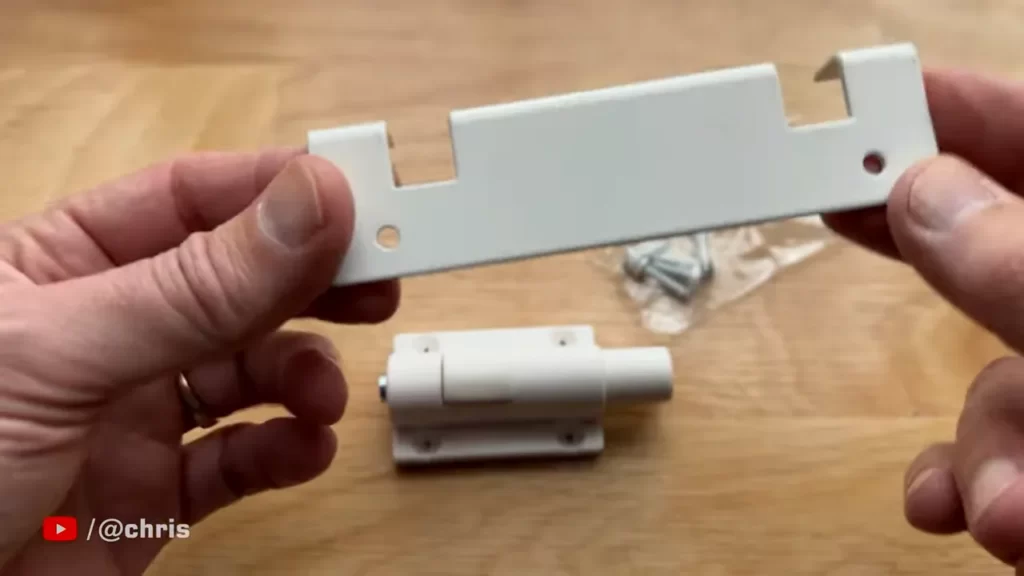
Installing a sliding door lock can provide an extra layer of security to your home or office. With just a few tools and materials, you can easily upgrade your sliding door to ensure the safety of your loved ones and belongings. Here is a quick overview of the tools and materials you will need:
1. Sliding door lock
A sliding door lock is the primary tool you will need for this installation. Make sure to choose a high-quality lock that suits your door and meets your security requirements. You can find a variety of sliding door locks in hardware stores or online. Ensure that the lock you choose is compatible with your sliding door design.
2. Measuring tape
The next essential tool you’ll need is a measuring tape. Accurate measurements are crucial for a successful installation. Use the measuring tape to measure the width and height of your sliding door, as well as the thickness of the door frame. These measurements will help you select the right-sized lock and determine the placement on the door.
3. Screwdriver
A screwdriver is an indispensable tool for installing a sliding door lock. It is recommended to have both a Phillips and a flathead screwdriver on hand. The screwdriver will be used to remove any existing hardware on the door and secure the lock in place.
4. Drill
A drill will come in handy when installing certain types of sliding door locks. If your chosen lock requires drilling holes in the door frame for installation, make sure you have a drill and the appropriate drill bit size that matches the lock’s specifications. Always follow the manufacturer’s instructions when drilling holes.
5. Pencil
A simple pencil can be incredibly useful during the installation process. Use a pencil to mark the locations where you will be installing the lock and drilling holes. This will help ensure accurate placement and prevent any mistakes.
Now that you know the tools and materials required for installing a sliding door lock, you’re ready to move on to the next steps of the installation process. Take your time to gather these items before starting the installation to ensure a smooth and successful project.
Understanding Sliding Door Locks
Understanding Sliding Door Locks
Sliding door locks are an essential component of home security, offering a reliable way to safeguard your property and give you peace of mind. When it comes to protecting your sliding doors, it’s crucial to familiarize yourself with the different types of sliding door locks available, understand the benefits of installing them, and consider important factors before making a decision. In this article, we’ll explore these aspects in detail, helping you make an informed choice for your home.
Types of Sliding Door Locks
There are several types of sliding door locks available, each offering a unique level of security. Understanding these options will help you determine the most suitable lock for your sliding door:
- Keyed Sliding Door Locks: These locks require a key to unlock and provide an additional layer of protection against unauthorized entry.
- Mortise Sliding Door Locks: Mortise locks are installed inside the door frame, offering enhanced security and durability.
- Surface-Mounted Sliding Door Locks: These locks are attached to the surface of the door and provide a simple yet effective locking mechanism.
- Handle Latch Sliding Door Locks: These locks use a latch mechanism and can be operated from both sides, making them convenient for everyday use.
Benefits of Installing a Sliding Door Lock
Installing a sliding door lock offers a range of benefits that go beyond just security. Here are some advantages of having a sliding door lock:
- Enhanced Security: A sliding door lock acts as a strong deterrent to potential intruders, keeping your home and loved ones safe.
- Convenience: With a sliding door lock, you can easily control access to your property and enjoy peace of mind.
- Child Safety: Sliding door locks provide an extra layer of protection, preventing young children from opening the door without supervision.
- Noise Reduction: A properly installed sliding door lock can help reduce outside noise, creating a more peaceful and quiet living environment.
- Energy Efficiency: By ensuring a tight seal, a sliding door lock can improve insulation, leading to energy savings and lower utility bills.
Factors to Consider Before Installing a Sliding Door Lock
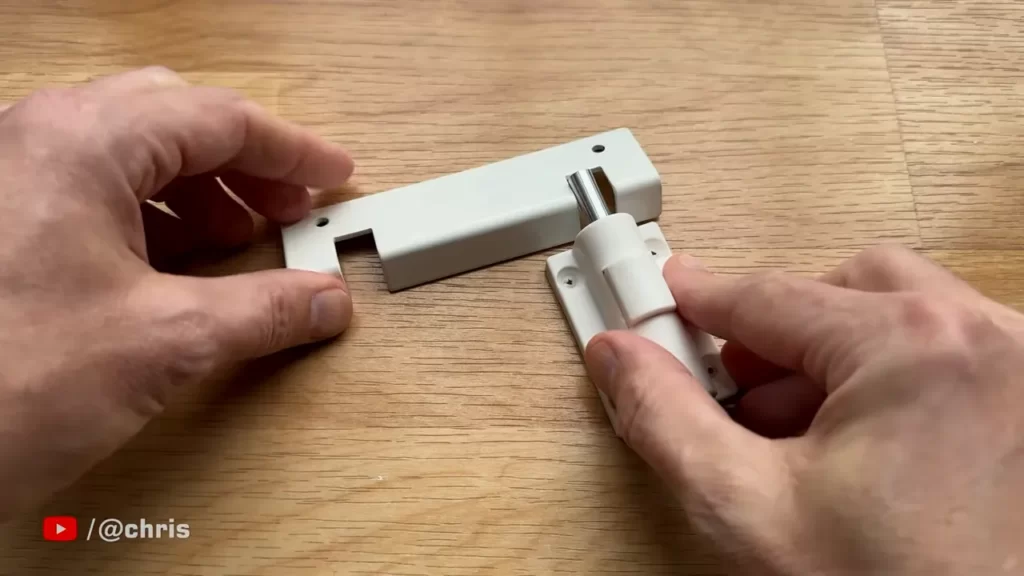
Before installing a sliding door lock, it’s important to consider certain factors to ensure the effectiveness and suitability of the lock:
- Door Material: Different sliding doors require different types of locks. Consider the material of your sliding door, such as wood, glass, or aluminum, to choose a lock that is compatible.
- Lock Type: Evaluate the different types of sliding door locks to determine the one that best suits your needs in terms of security, convenience, and aesthetics.
- Installation Process: Assess whether you have the necessary skills and tools to install the lock yourself or if you need to hire a professional locksmith.
- Local Building Codes: Research your local building codes to ensure compliance when installing a sliding door lock, especially for rental properties or homeowners’ associations.
- Budget: Consider your budget when selecting a sliding door lock. While it’s important to prioritize security, it’s also crucial to find a lock that fits within your financial constraints.
By understanding the different types of sliding door locks, recognizing the benefits of installing them, and considering essential factors, you can make an informed decision and enhance the security of your home. Take the necessary steps to protect your property and enjoy the peace of mind you deserve.
Measuring The Sliding Door
Determining the height and width for the lock placement
Before you start installing a sliding door lock, it’s crucial to measure the height and width of your door to ensure proper placement of the lock. This step is essential for both security and functionality purposes. By accurately measuring the door, you can determine the ideal position for the lock, allowing for ease of use.
Marking the spots for drilling
Once you have measured the dimensions of your sliding door, the next step is to mark the spots where you will be drilling. This will ensure that you have a clear visual guide for installing the lock. To mark the drilling spots, follow these simple steps:
- Position the sliding door at the closed position. This will help you identify where the lock needs to be installed.
- Use a pencil or marker to mark the height of the lock on the edge of the door frame. Make sure the mark is clearly visible and easy to reference.
- Next, determine the width placement for the lock. Measure the distance from the edge of the door to the center point where you want the lock to be installed.
- Using a measuring tape or ruler, mark this distance with a pencil or marker on the door frame. Double-check the accuracy of your measurement to ensure precise placement.
- Repeat these steps on the opposite side of the door if you are installing a double-sided lock.
By following these steps, you can ensure that your sliding door lock is installed at the correct height and width, providing optimal security and convenience.
Preparing The Sliding Door
Cleaning the surface for better installation
Before installing a sliding door lock, it is important to thoroughly clean the surface of the door to ensure a secure and long-lasting installation. Dirt, dust, and debris can hinder the adhesive properties of the lock, compromising its effectiveness. Follow these steps to clean the surface:
- Start by removing any loose dirt or debris using a soft cloth or a brush.
- Next, prepare a solution of mild detergent and warm water.
- Dip a clean cloth into the solution and gently scrub the surface of the door, paying special attention to areas where the lock will be installed.
- Rinse the door thoroughly with clean water and wipe it dry using a soft cloth.
- Ensure that the surface is completely dry before proceeding with the installation.
Removing any existing hardware
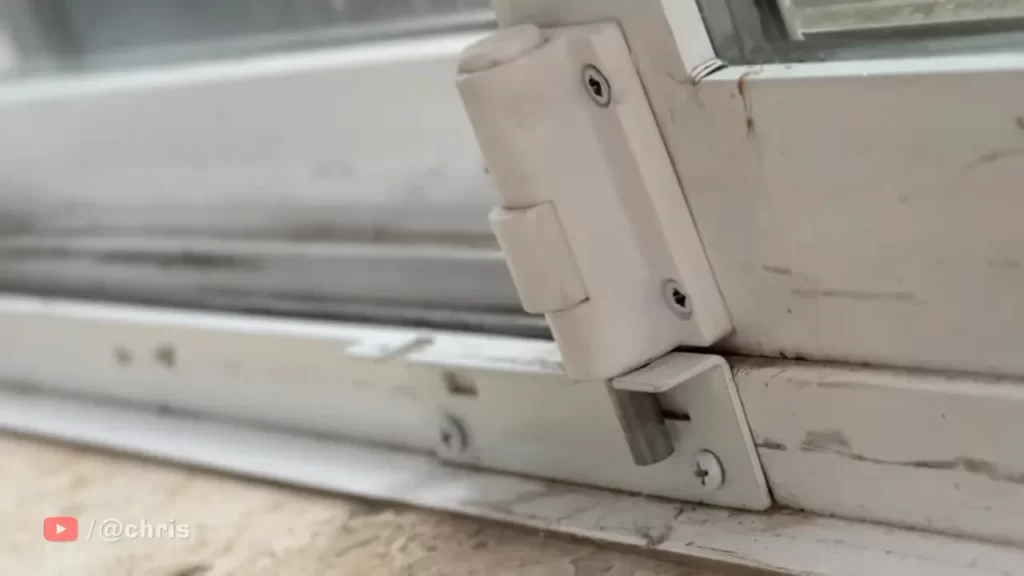
If your sliding door already has a lock or any other hardware installed, it is important to remove it before installing a new sliding door lock. Here’s how to remove existing hardware:
- Carefully examine the door to identify any screws or fasteners holding the existing hardware in place.
- Using the appropriate screwdriver or tool, loosen and remove all screws or fasteners.
- Gently pull away the existing hardware from the door, ensuring not to damage the surface in the process.
- If there are any adhesive residues left behind, use a mild adhesive remover and wipe the surface clean.
By cleaning the surface and removing any existing hardware, you are preparing the sliding door for the installation of a new lock. These steps will ensure a clean and ideal surface for the lock to adhere to, ensuring its effectiveness and longevity.
Positioning The Lock
Installing a sliding door lock is an important step to enhance the security of your home or office. One crucial aspect of installing a sliding door lock is positioning it correctly. Determining the ideal location for the lock and aligning it with the marked spots on the door are key factors in ensuring its effectiveness.
Determining the ideal location for the lock
Before you start the installation process, take a moment to determine the ideal location for the lock on your sliding door. Consider the following factors:
- Access: Place the lock in a position that offers convenient access for you and your household members or employees, while still being out of reach for potential intruders.
- Visibility: Ensure that the lock is visible from the outside. This will act as a deterrent for burglars, as they will be less likely to attempt a break-in if they can see a visible lock.
- Door structure: Take into account the structure of your sliding door. Look for areas where the lock can be securely attached without damaging the door or impeding its functionality.
Aligning the lock with the marked spots on the door
Once you have determined the ideal location for the lock, it’s time to align it with the marked spots on the sliding door. Follow these steps:
- Carefully measure the distance between the marked spots on the door, ensuring that the lock will be positioned accurately.
- Align the lock with the marked spots and hold it firmly against the door surface.
- Using a pencil or marker, trace the lock’s outline onto the door to create a guide for the installation.
By aligning the lock with the marked spots on the door, you can ensure that it is properly positioned for maximum security. This also helps in maintaining a clean and professional appearance once the lock is installed.
Remember, positioning the lock correctly is crucial for its effectiveness. Taking the time to determine the ideal location and align it with the marked spots will provide you with a secure sliding door lock that offers peace of mind for you and your loved ones.
Drilling Holes
Using the drill to create holes for the lock components
Drilling holes is an essential step when installing a sliding door lock. This process allows you to create the necessary openings for the lock components, ensuring a secure fit and proper functionality of the lock. To help you navigate this step with ease, we’ve put together a simple guide on how to use the drill to create holes for your sliding door lock.
Ensuring proper alignment and depth for the holes
While drilling holes may seem straightforward, it’s crucial to ensure the proper alignment and depth for each hole. This will guarantee that the lock components fit snugly and work as intended. Here are some tips to help you achieve the right alignment and depth:
- Measure and mark the position of the lock components accurately on the door.
- Use a drill bit that matches the size specified by the lock manufacturer.
- Secure the door firmly to prevent any movement during the drilling process.
- Begin drilling with a steady hand and apply consistent pressure to maintain control.
- Check the depth of each hole regularly using a depth gauge or a piece of tape wrapped around the drill bit.
- Adjust the drilling depth if needed to ensure the components fit flush with the surface of the door.
By adhering to these guidelines, you can ensure that your sliding door lock is installed correctly, minimizing the risk of any issues down the line.
Installing The Lock Components
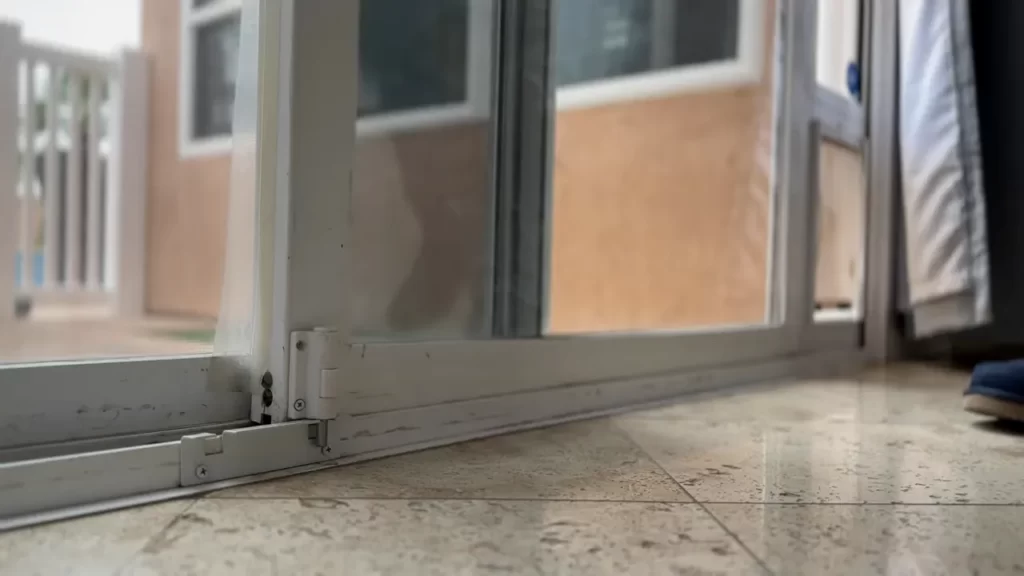
When it comes to securing your sliding door, one of the essential steps is installing the lock components properly. This ensures that your door provides the level of security and peace of mind you desire. In this post, we will guide you through the process of installing the lock components of a sliding door, so you can protect your home and loved ones with confidence.
Attaching the lock mechanism to the door frame
To begin the installation process, you need to attach the lock mechanism to the door frame. This mechanism is the heart of the sliding door lock and provides the functionality to secure the door in a closed position. Here’s a step-by-step guide:
- Start by positioning the lock mechanism on the inner side of the door frame, usually near the center.
- Ensure that the mechanism aligns with the corresponding holes or recesses on the door frame, as these are specifically designed for secure attachment.
- Using a screwdriver or a power drill with a suitable bit, fasten the mechanism securely onto the door frame.
- Double-check that the mechanism is aligned properly and tightly attached, as any looseness can compromise the effectiveness of the lock.
By following these steps, you will have successfully attached the lock mechanism to the door frame, laying the foundation for a secure sliding door lock.
Securing the lock with screws or bolts
After attaching the lock mechanism, the next important step is to secure the lock with screws or bolts. This further strengthens the lock’s grip on the door frame and enhances its ability to resist forced entry. Here’s what you need to do:
- Position the lock plate or strike plate on the outer side of the door frame, directly opposite the lock mechanism.
- Ensure that the holes on the lock plate align with the corresponding holes on the door frame.
- Use screws or bolts of appropriate length to fasten the lock plate securely onto the door frame.
- Check the tightness of the screws or bolts and make any necessary adjustments to ensure a snug fit.
By securing the lock with screws or bolts, you complete the installation of your sliding door lock, providing an additional layer of security to your home.
Remember, a properly installed sliding door lock not only improves security but also offers peace of mind, knowing that your loved ones and belongings are well protected. Take the time to install your lock components correctly, following the guidelines mentioned above, and enjoy the added security and convenience a sliding door lock brings.
Testing The Lock
After successfully installing a sliding door lock, it is crucial to test its functionality to ensure optimal security. Properly testing the lock will give you peace of mind, knowing that your sliding door is protected against unauthorized access. In this section, we will discuss how to check the functionality of the lock and ensure smooth sliding and locking.
Checking the functionality of the lock
Before you begin testing the lock, make sure all the installation steps have been followed correctly. Ensure that the lock is properly aligned with the sliding door frame. Once everything is in place, proceed with the following steps:
- Insert the key into the lock and turn it clockwise to lock the sliding door. Make sure the lock firmly holds the door in place and prevents any movement.
- Attempt to move the sliding door by applying gentle pressure. The lock should keep the door from sliding open.
- Unlock the door by turning the key counterclockwise. The lock mechanism should disengage smoothly, allowing the door to slide open without any resistance.
- Repeat the above steps a couple of times to ensure the lock functions consistently and without any glitches.
Ensuring smooth sliding and locking
While testing the lock, it’s essential to also evaluate the overall smoothness and functionality of the sliding door itself. The lock’s effectiveness relies on the door’s ability to slide smoothly along the track and securely lock in place. Follow these additional steps to ensure the proper operation of both the lock and the sliding door:
- Clean the sliding door track of any dirt or debris that may hinder its movement. Use a dry cloth or brush to remove any obstructions.
- Check the alignment of the door within the frame. If the door is misaligned, it may not slide properly and affect the lock’s effectiveness. Consult the manufacturer’s instructions or seek professional assistance to realign the door if necessary.
- Avoid overloading the sliding door with heavy items, as this can strain the mechanism and impede smooth sliding and locking. Distribute the weight evenly for optimal performance.
- Regularly lubricate the sliding door track and lock mechanism to ensure smooth operation. Refer to the manufacturer’s recommendations for the appropriate lubricant.
Following these steps will help you test your sliding door lock’s functionality and ensure smooth sliding and locking. Regular maintenance and periodic inspections will contribute to the longevity and effectiveness of the lock, providing the security and convenience you desire.
Making Final Adjustments
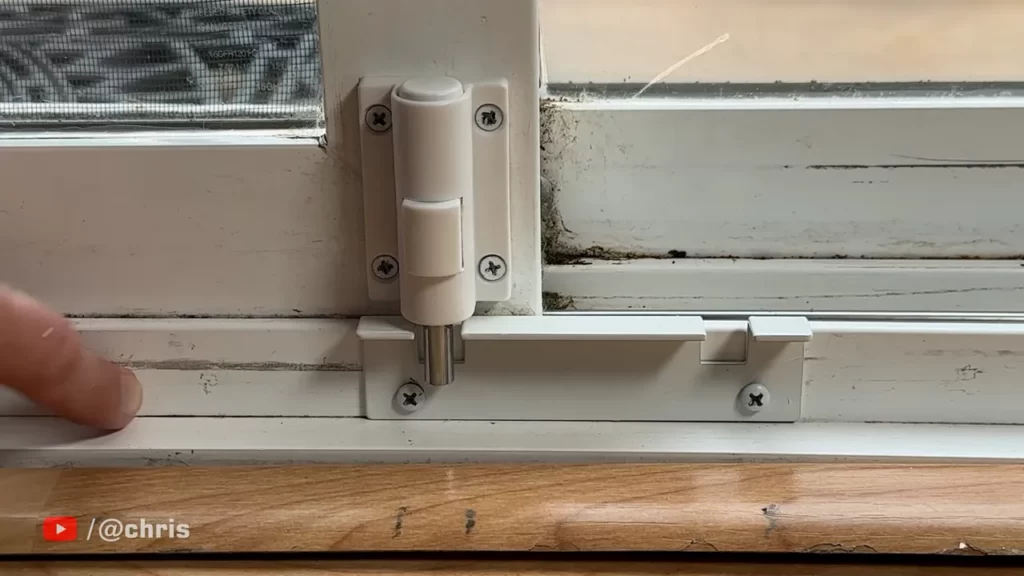
Adjusting the lock mechanism if needed
One of the final steps in installing a sliding door lock is adjusting the lock mechanism to ensure smooth operation and optimal security. If you find that the lock is not functioning properly or feels stiff, you may need to make some adjustments. Here are the steps you can follow:
- Examine the lock mechanism: Start by closely inspecting the lock mechanism to identify any visible issues. Look for any loose screws, misaligned parts, or signs of wear and tear.
- Tighten loose screws: If you notice any screws that are loose, use a screwdriver to carefully tighten them. Make sure not to overtighten, as it could damage the lock.
- Lubricate the lock: Apply a small amount of lubricant to the moving parts of the lock mechanism. This will help to reduce friction and ensure smooth operation. Use a silicone-based lubricant for best results, as it won’t attract dirt or debris.
- Test the lock: After making adjustments and applying lubricant, test the lock by sliding the door open and closed. Pay attention to any sticking points or resistance. If the lock still doesn’t work smoothly, additional adjustments may be required.
Ensuring proper alignment and fit
Aside from adjusting the lock mechanism, it’s important to ensure that your sliding door lock is properly aligned and fitted. This will not only improve the performance of the lock but also enhance the overall security of your door. Follow these steps to ensure a proper alignment and fit:
- Check the alignment: Inspect the door and frame to ensure they are properly aligned. Look for any gaps or spaces that may prevent the lock from fitting correctly. If alignment issues are present, you may need to adjust the door or frame accordingly.
- Measure and compare: Use a measuring tape to determine the thickness of your door. Compare this measurement to the lock dimensions to ensure a proper fit. If the lock is too large or small, you may need to consider a different lock or make modifications to the door.
- Install additional hardware: If necessary, install additional hardware to provide extra support for the lock. This could include strike plates, reinforced screws, or other accessories that help secure the lock and prevent tampering.
- Test the fit: Once the lock is installed and any necessary adjustments are made, test the fit by operating the lock multiple times. Ensure that it engages and disengages smoothly, without any excessive force or resistance.
Frequently Asked Questions For How To Install A Sliding Door Lock
How Do You Install A Sliding Door Lock Bar?
To install a sliding door lock bar, first, measure the width of the door track. Place the bar in the track and adjust its length to fit. Tighten the adjustment screw to secure the bar in place. Test the lock by sliding the door and ensure it’s secure.
Can You Put A New Lock On A Sliding Glass Door?
Yes, you can install a new lock on a sliding glass door for better security.
What Kind Of Lock Can I Put On A Sliding Door?
For sliding doors, a suitable lock is a sliding door lock or a patio door lock. These locks are specifically designed to secure sliding doors and provide added protection for your home.
How Do You Install A Sliding Door Latch Lever?
To install a sliding door latch lever, first, position the lever on the door edge at your desired height. Then, mark the screw holes with a pencil. Next, drill pilot holes into the marked spots. After that, screw the latch lever onto the door, making sure it is secure.
Finally, test the latch to ensure proper functioning.
How Do You Install A Sliding Door Lock?
To install a sliding door lock, start by measuring and marking the position, drilling holes, inserting the lock, and securing it with screws.
What Tools Are Needed For Installing A Sliding Door Lock?
You will need a measuring tape, a drill, drill bits, a screwdriver, screws, a pencil, and the sliding door lock kit.
Conclusion
In a few simple steps, you can easily install a sliding door lock to enhance the security of your home or office. By following the guidelines mentioned in this blog post, you now have the knowledge and confidence to tackle this DIY project.
Remember to choose a quality lock, measure accurately, and take your time during the installation process. With a sliding door lock in place, you can enjoy peace of mind knowing that your property is protected. Happy securing!
